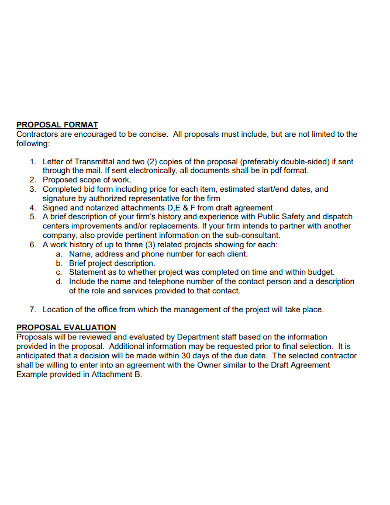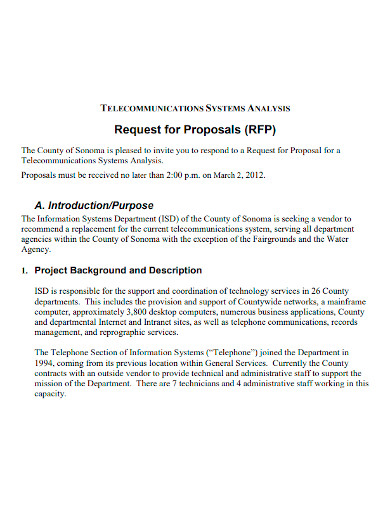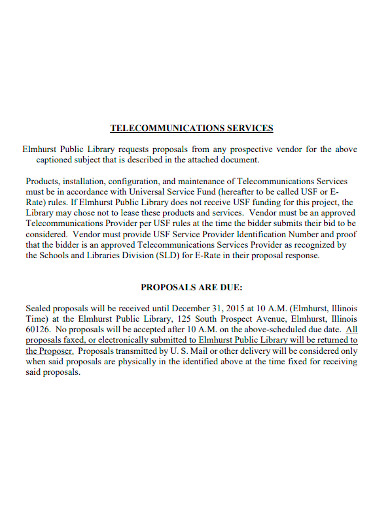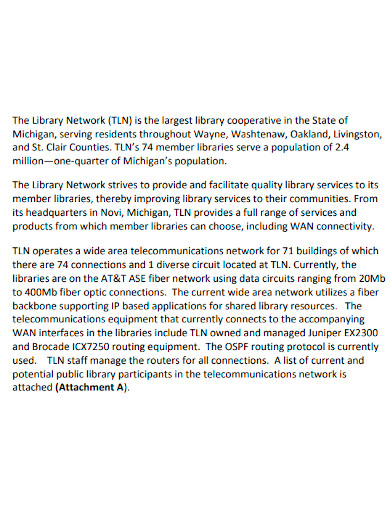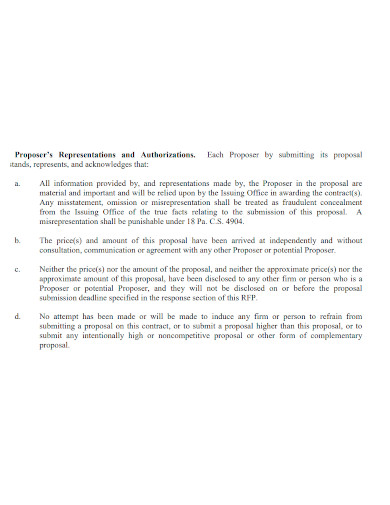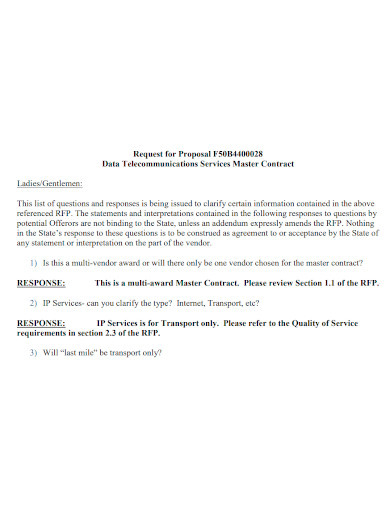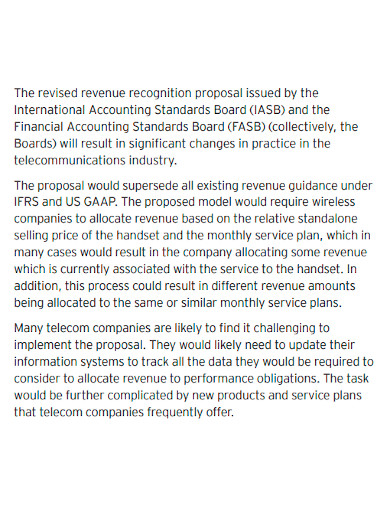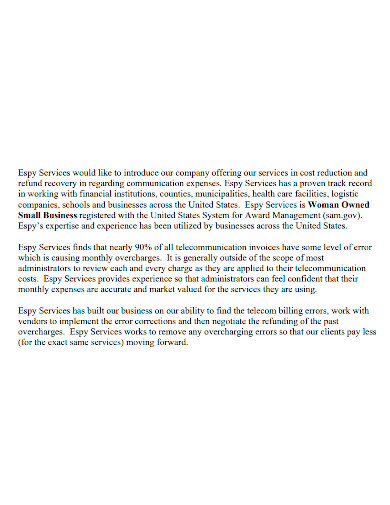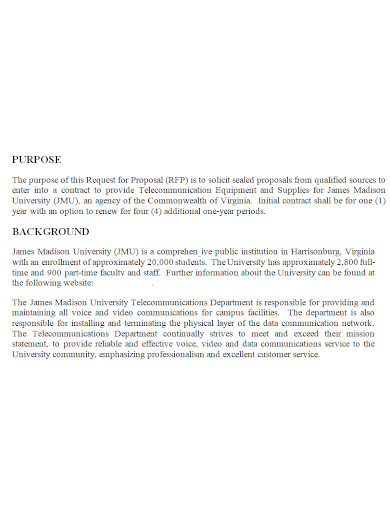The telecommunications industry is the most popular and fastest-growing industry in this day and age. With globalization growing larger as time goes by, other industries rely on telecommunications to do their work efficiently. Telecommunications basically do telecom infrastructure, designing and manufacturing computers, selling service plans to users, building and maintaining wireless networks, satellite communications, and creating Wi-Fi reading applications. This industry provides endless opportunities for everyone to provide work and make money. It’s not unusual that telecommunications companies propose business deals with other businesses. Since this industry is booming, competition can be fierce and it can be challenging to stand out from the crowd. However, you need to try your best to address your potential client’s needs and wants, and to do this you need a helpful tool like a proposal. You might be a bit clueless about what a proposal looks like but there’s no need to worry. Read the article to find out how to create a telecommunication proposal.
10+ Telecommunications Proposal Samples
1. Telecommunications Proposal Sample
2. Telecommunications Improvement Proposal
3. Telecommunications Infrastructure Services Proposal
4. Telecommunications Analysis Proposal
5. Telecommunications Services Proposal
6. Telecommunications Request for Proposal
7. Telecommunications Expense Management Proposal
8. Telecommunications Request for Proposal Sample
9. Editable Telecommunications Proposal
10. Telecommunications Auditing Proposal
11. Telecommunications Equipment Proposal
What is Telecommunications?
Telecommunications are the means of electronic transmission links (or channels) of information over distances that take the form of voice and video calls, data, softcopy documents, data, texts, sounds, and images transmitted from a sending device to a receiving device.
How to Write a Telecommunications Proposal
Before you write your proposal, gather some information about the client. Know first what their business is about and their history. Know what telecommunications services or products or projects they need most right now that you can provide them. This is important because you will base your proposal on your client’s needs and wants and every client has different needs and wants. Once you’ve done your research, it’s time to write the proposal.
1. Start With the Title Page and Introduction
The first thing in your proposal is the title page. Provide the title of your telecommunications project or service or product proposal. Also include the name of your company or organization on the title page.
The next part is the table of contents, where you guide the readers on what your proposal is composed of. Include an executive summary where you summarize what the whole proposal is all about. The next part is the introduction where you introduce yourself. Explain why you are sending your proposal at this time and state what you would like the reader to do after considering the proposal. Provide all your contact information.
You also need to put a definition of terms section to describe some specific words or jargon that are not easily understandable by anyone.
2. Address the Client’s Needs
The next section will draw out your clients’ needs to obtain your telecommunications company’s product or service. What do they need or want from you? This must be the main subject of this section. This section is where you lay out the problem statement, needs assessment, goals, and objectives of the proposal, specifications, performance and interface requirements, limitations, and deadlines, schedule, and market demand.
3. Describe Your Proposed Solutions
Once you described the client’s wants and needs and other information, it’s time to describe your proposed activity to address the client’s needs and explain how your project, products, or services will meet the needs and requirements of your client. Include as many topics as necessary to fully describe your proposal since this is where you will layout your intent, project plan, the products or services you offer, cost summary, schedule of the project or the services to be done, the products available for the client, and the benefits the client could get from the service.
4. Give Some Information About You and Your Company
In the final section of your proposal, you need to convince your client to choose you as their supplier or partner. Provide them with more information about you such as your company history, the projects you worked on, the names of the company staff, and the list of clients you worked with in the past. You can also put in some testimonials from them and the achievements and awards you received to increase your credibility impression to your client.
FAQs
What are examples of telecommunications?
Telecommunications channels come in different shapes and sizes and capabilities. Some examples of telecommunications are computer networks, the internet, and telephone network.
Why do we use telecommunications?
People use telecommunications to collect information technology and connect and communicate with people through various media of communication. Telecommunications is the foundation for businesses, governments, communities, and families to seamlessly connect and share information.
What’s another word for telecommunications?
Telecommunications have several synonyms. It can also be called datacoms, telecom, telecommunications, telecoms, and telephony, information technology,
Don’t forget to master everything about your company and the services you offer because your clients will have questions about those and you need to provide answers to their queries without skipping a beat. Proofread your proposal carefully. It is a formal document and you will be presenting it to people so you need to make sure it is free from grammatical and spelling mistakes. The sentences must be concise and understandable, the language and tone are formal and friendly at the same time, and the vocabulary is easy to understand. Make your proposal look attractive and unique but keep a format that reflects your company. This is to ensure that your proposal stands out from your competitors. To help you get started writing your proposal, download our free sample templates above to serve as your guide!
Related Posts
FREE 11+ Engineering Project Proposal Samples in PDF | MS Word
FREE 4+ Racing Sponsorship Proposal Samples [ Team, Car, Driver ]
FREE 10+ Nursing Project Proposal Samples [ Community, Health, Clinical ]
FREE 11+ Student Council Proposal Samples in PDF | DOC
FREE 10+ Facilities Management Proposal Samples in MS Word | Google Docs | Apple Pages | PDF
FREE 8+ Joint Venture Proposal Samples [ Commercial, Real Estate, Construction ]
FREE 10+ Scholarship Proposal Samples [ Project, Grant, Sponsorship ]
FREE 10+ Computer Purchase Proposal Samples in MS Word | Google Docs | Apple Pages | PDF
FREE 10+ Network Project Proposal Samples [ Design, Security, Bank ]
FREE 14+ Accounting Proposal Samples in PDF | MS Word
FREE 10+ Church Event Proposal Samples in MS Word | Google Docs | Apple Pages | PDF
FREE 10+ History Proposal Samples [ Dissertation, Thesis, Paper ]
FREE 34+ Sponsorship Proposal Samples in PDF | MS Word | Pages | Google Docs
FREE 11+ Cost Proposal Samples & Templates in PDF
FREE 11+ Maintenance Proposal Samples in MS Word | Google Docs | PDF


